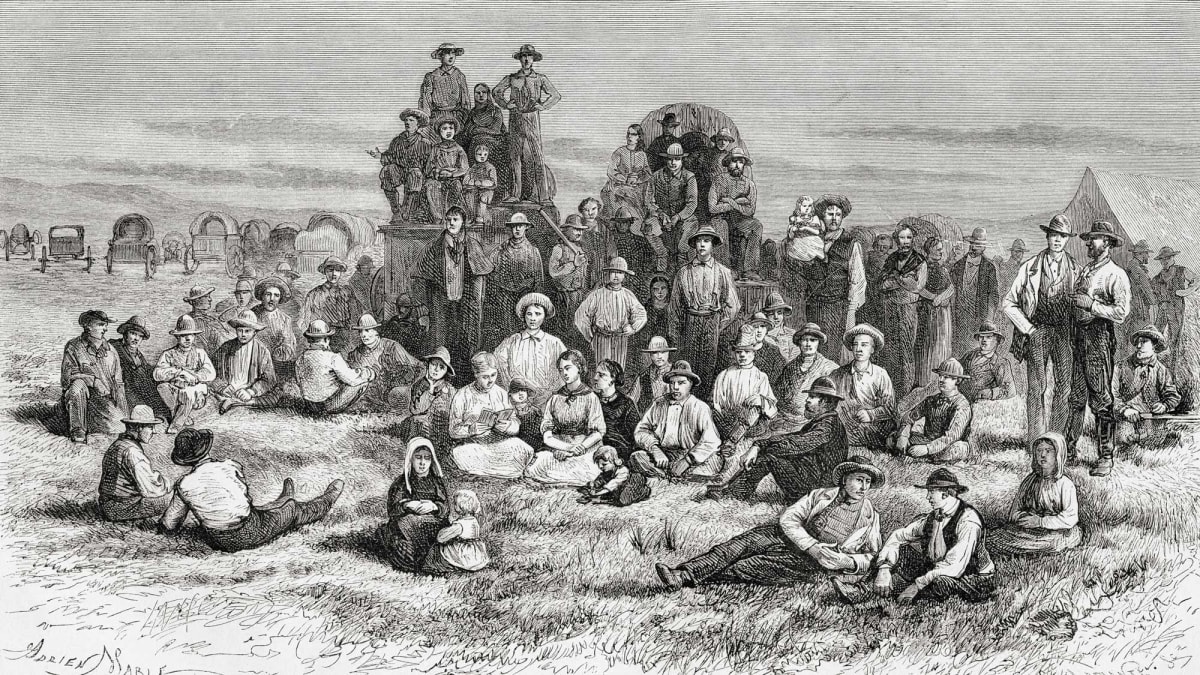
Having lived in Utah since 1857, Jesse Murphy returned to the Missouri River in 1860 to escort his father's family west. At Florence, Nebraska Territory, he was named captain of 279 emigrants. There were 38 wagons, 2 carriages, 255 head of livestock, and a threshing machine belonging to Captain Murphy's father. They left Florence on June 19. At Loup Fork ferry, two missionaries with a small wagon caught up to and joined the company. The missionaries had been serving among the Cherokees in Indian Territory. On June 30 the company passed Wood River Center. Captain Murphy often permitted two sisters (ages 10 and 12) to ride on his father's threshing machine, a practice that led to a memorable event. As they forded the Platte River, water flooded over both the thresher and the girls. Fortunately all were saved as Murphy held the girls up high so that their parents, on the other side of the river, could see that all was well.
In mid-July they reached Ash Hollow and passed Fort Laramie in late July. George Q. Cannon, in charge of Mormon emigration that year, overtook them at Greasewood Creek and camped with them at Independence Rock on August 7. When some in the company saw the many emigrant graves near Devil's Gate, they did not want to continue until the Captain promised them that none of them would die on the trail. His promise was fulfilled as there were no deaths.
On August 23, celebrated adventurer Richard F. Burton passed the emigrants as they were descending Quaking-Asp Hill. "The descent was long and rapid—so rapid, indeed, that oftentimes when the block of wood which formed our break dropped a bit of old shoe leather nailed upon it to prevent ignition, I felt, as a man may be excused for feeling, that catching of the breath," Burton wrote. "The sides of the road were rich in vegetation, stunted oak, black-jack, and box elder of the tallest stature; above rose the wild cherry, and the service-tree formed the bushes below. The descent, besides being decidedly sharp, was exceedingly devious, and our frequent 'shaves'—a train of Mormon wagons was crawling down at the same time—made us feel somewhat thankful that we reached the bottom without broken bones."
Burton also wrote that Captain Murphy flew the American flag and that the emigrants, "though weather-beaten, all looked well." Murphy's company was at Sulfur Creek on August 16. On August 29 the two missionaries who had earlier joined the company arrived in Salt Lake City. The rest of the company arrived the following day. Of his travel with the company, one of the missionaries recalled, "I enjoyed myself excellently while crossing the plains, walking nearly the whole distance and to me it was more like a pleasure trip, than a toilsome pilgrimage." Two babies were born en route.